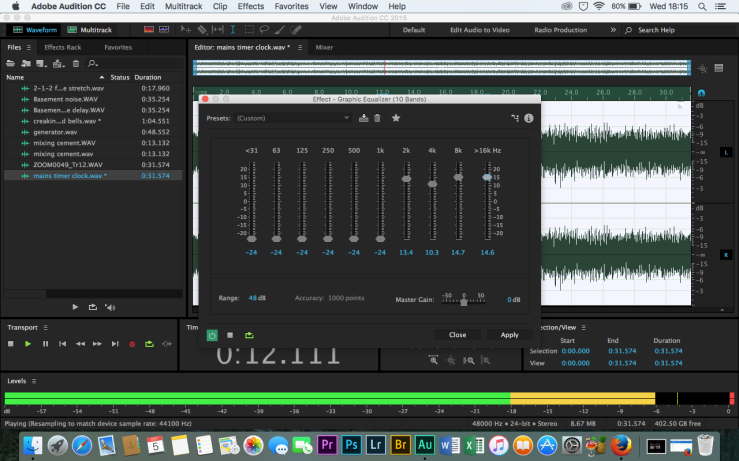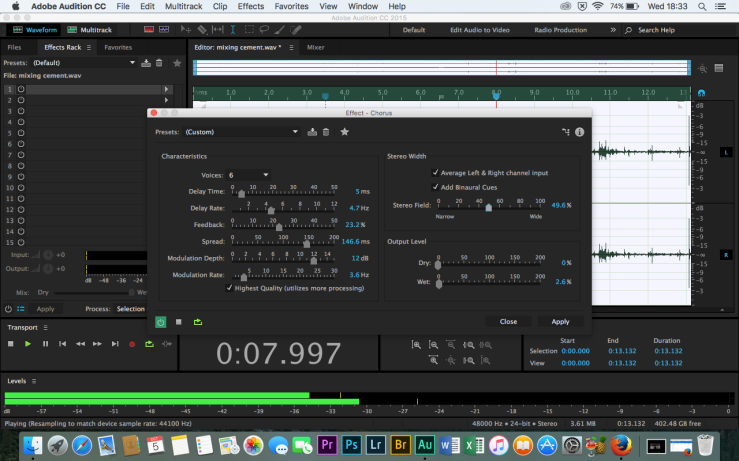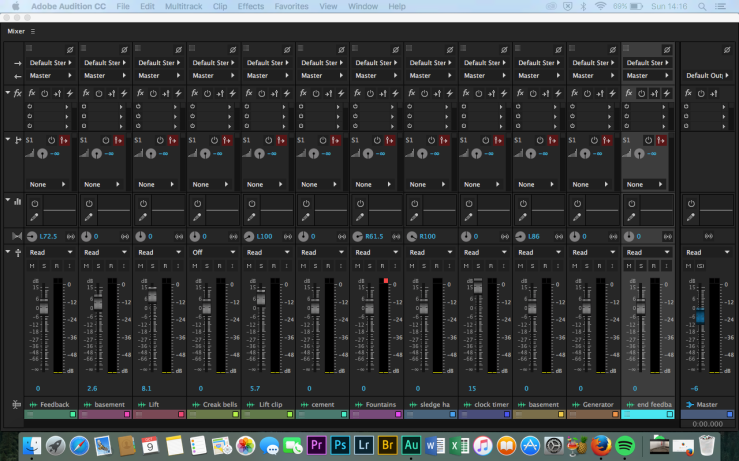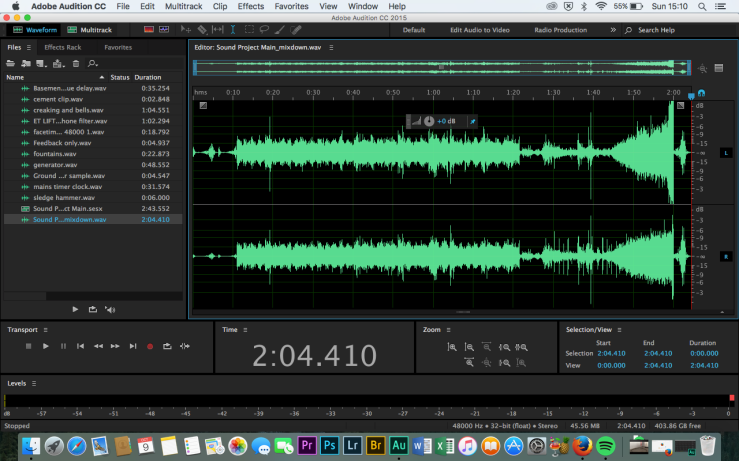
Concept:
The brief we were given was really a blank canvas. Initially I wasn’t exactly sure how to proceed. After researching a few different composers and artists we talked about in the class I decided that the best way to proceed was to just start recording sounds and then see where the recordings would take my work.
Recording:
Most of my sounds were collected from using a Zoom H5 audio recorder. If I was in a noisy environment I added a ME66 rifle mic to allow me to be more selective about what I wanted to record. Initial I tested out a contact mic attached to a large metal, bowl shaped lighting modifier as I thought that would sound interesting, however the audible sound didn’t translate with the same feeling when recorded so I decided not to use them in my final piece.
The recordings used in the final piece came from three main locations: experiments at home, the field trip to Birmingham and finally two University buildings on campus. My initial experiments at home came almost by accident from testing the Face Time application on two laptops in close proximity to each other. Having the volume turned up on both laptops and placing them approximately one meter apart created a feedback loop with various results from different sound sources. The triggers for the feedback came from voices, whistling and my dog barking, who decided to join in due to the high frequencies being generated I think. The recordings were similar to the ones produced in my research material from the Forbidden Planet sound track. The field trip recordings had a more natural spacial presence to them as the were recorded outside in the canal and street areas around Broad street. At the time there was a lot of work going on in the area by Police, who were securing the Convention Centre for the Conservative Party Conference, including the use of hammers to fix down manholes. Other sounds collected were fountains, generators and the creaking ropes of canal barges and the well timed church bells in the same recording. Having reviewed the files from the first two locations, I decided to seek out more mechanical and industrial sounds. The ideal place for this was off the beaten track at the university. I toured the Ellen Terry and Graham Sutherland buildings in the evenings when I had most spaces to myself to get clean recordings. I found some great sounds in the lifts, both from the recorded voices and the physical creaks from them moving. one of the most dominant sounds I used in my final piece was recorded in the basement corridor next to one of the machinery workshops. There was a fantastic pulsating noise the I think was being generated by a milling machine in the next room that was being transmitted into the ceiling space of the corridor. There was a tile missing from the suspended ceiling that was allowing the sound to flow into the corridor. Another interesting sound I found was that of a mechanical clock timer on a power supply to a vending machine.
Production:
All software post production was carried out using Adobe Audition CC. This was the first time using the program in anger, having only used to to top and tail clips before. I have included some of the experiments I did, there were other tracks that didn’t make the cut and some additional manipulation to the tracks used.
Below is the filter I applied to the basement noise, I wanted to get the effect of a low rumbling drone, using the the ‘leave the bass’ filter did a great job. I did experiment with other filters, including parametric EQ.

In addition to the EQ, I added a delay effect to the basement noise to give it more depth.

Below is the EQ I applied to the mechanical clock, this was partially to remove background noises from the cooling compressor of the vending machine.

I recorded the sound of a builder hand mixing cement in a bucket, although I initially liked the sound, when I added it to the other sounds in my piece it got lost in the mix so I decided to drop it from the final version.

This is the waveform of the sledgehammer. I decided to use the unedited recording as it had excellent spacial presence, with its short high frequency characteristics, it stands out from the lower frequency drone.

Below is the mixer view of my final recording. I panned a few tracks left and right to add interest and depth to the piece. In the second image you can see that I automated the volume levels to build towards the end of the piece in a crescendo.


This is the mix down wave form and view of the final editor panel.


Peer Feedback:
My piece was played back to my classmates last week for comment. I think the general feedback was good, creepy, like a horror movie and dark. This was a positive response I think!!!
Summary:
This was an interesting introductory project and with the recent launch of the Kino project a vital step into experimental sound. Coming from a Music Technology background, where you are taught to have pristine recordings, it was a lot of fun to experiment with more industrial and mechanical sounds. Listening to soundscapes in films has been eye-opening. To be honest I had never heard of Walter Murch before this project, however I have realised that I have seen a lot of the films he had worked on and liked them, strangely enough for their sound design. I set out to make an abstract piece with the sounds I selected with out any narrative, I do think it naturally developed its own elements of a story with the changes in intensity during the piece. I’m looking forward to seeing/hearing the results of it being played back in the street for our performance session.
My final recording: